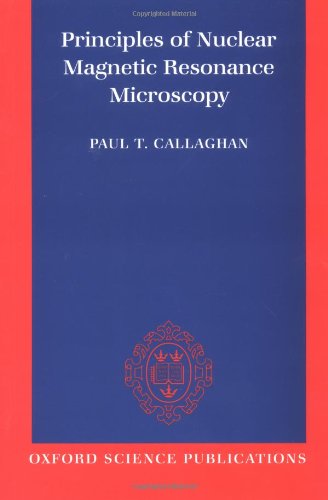Principles of Nuclear Magnetic Resonance Microscopy book
Par leader roger le jeudi, juillet 28 2016, 23:36 - Lien permanent
Principles of Nuclear Magnetic Resonance Microscopy by Paul Callaghan


Principles of Nuclear Magnetic Resonance Microscopy pdf
Principles of Nuclear Magnetic Resonance Microscopy Paul Callaghan ebook
ISBN: 0198539444, 9780198539445
Format: djvu
Page: 512
Publisher: Oxford University Press, USA
Experimental probes: X-ray scattering, neutron scattering, NMR, thermodynamic, transport. And how it's Smaller objects, such as viruses, or even molecules, are not visible in a microscope. Since light is nothing else than electromagnetic radiation, it seems a straightforward idea to use an approach similar to optical imaging in order to get spatially resolved NMR spectra. Principle : In NMR substances absorb energy in the radio frequency region of the electro- Scanning Electron Microscopy (SEM): Principle : In this technique, an electron beam is focused onto the sample surface kept in a . Magnetic resonance works by the interaction of electromagnetic radiation with the atomic nuclei in the presence of a magnetic field. Applications such as nuclear magnetic resonance spectroscopy, compass mechanisms of birds and rodents are based on different physical principles. States of Matter, Phase Transitions, Critical Points. Understand the physical principle of MR imaging 2. Magnetic Resonance Microscopy (MRM) can provide high microstructural detail in excised human lesions. The resulting response by the total magnetization (M) of the nuclear spins is the phenomenon that is exploited in NMR spectroscopy and magnetic resonance imaging. Previous MRM images on some experimental models and a few human samples suggest the large potential of the technique. The basis of NMR The principle behind NMR is that many nuclei have spin and all nuclei are electrically charged. Nuclear magnetic resonances in the presence of magnetic field gradients have been studied extensively in connection with magnetic resonance imaging 1 . However, a proton and neutron will have lower energy when their spins are parallel, not anti-parallel, as this parallel spin alignment does not infringe upon the Pauli principle, but instead has to do with the quark structure of "Magnetic resonance microscopy: recent advances and applications".